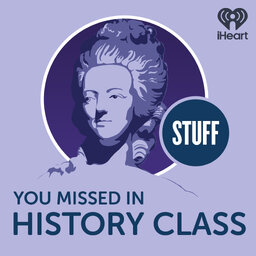A. Philip Randolph
A. Philip Randolph was a key figure in the history of Brotherhood of Sleeping Car Porters. But that was just one effort in a lifetime of activism for racial equality.
Research:
- "A. Philip Randolph." Encyclopedia of World Biography Online, Gale, 1998. Gale In Context: U.S. History, link.gale.com/apps/doc/K1631005446/GPS?u=mlin_n_melpub&sid=bookmark-GPS&xid=a02165a4. Accessed 10 May 2023.
- AFL-CIO. “A. Philip Randolph.” https://aflcio.org/about/history/labor-history-people/asa-philip-randolph
- American Experience. “A. Philip Randolph.” From Marcus Garvey: Look for Me in the Whirlwind. https://www.pbs.org/wgbh/americanexperience/features/garvey-philip-randolph/
- American Friends Service Committee. “Honoring A. Philip Randolph, a leader in the March on Washington.” 9/3/2020. https://afsc.org/news/honoring-philip-randolph-leader-march-washington
- Bishop, M. (2017, June 11). Lucille Campbell Green Randolph (1883-1963). BlackPast.org. https://www.blackpast.org/african-american-history/randolph-lucille-campbell-green-1883-1963/
- Bracey, John H. Jr. and “August Meier. “Allies or Adversaries?: The NAACP, A. Philip Randolph and the 1941 March on Washington.” The Georgia Historical Quarterly , Spring 1991, Vol. 75, No. 1. https://www.jstor.org/stable/40582270
- Britannica, The Editors of Encyclopaedia. "A. Philip Randolph". Encyclopedia Britannica, 12 May. 2023, https://www.britannica.com/biography/A-Philip-Randolph. Accessed 12 May 2023.
- Bynum, Cornelius. “A Philip Randolph and the Struggle for Civil Rights.” University of Illinois Press. 2010.
- Green, James R. “A. Philip Randolph and Boston's African-American Railroad Worker.” Trotter Review. Vol. 6, Issue 2. 9/21/1992. http://scholarworks.umb.edu/trotter_review
- Hill, Norman. "A. Philip Randolph. (Labor)." Social Policy, vol. 32, no. 4, summer 2002, pp. 9+. Gale General OneFile, link.gale.com/apps/doc/A90747203/GPS?u=mlin_n_melpub&sid=bookmark-GPS&xid=f45caf0e. Accessed 10 May 2023.
- Marable, Manning. “A. Philip Randolph and the Foundations of Black American Socialism.” From Workers' Struggles, Past and Present, edited by James Green. Temple University Press.
- Prescod, Paul. “You Should Know More About A. Philip Randolph, One of America’s Greatest Socialists.” Jacobin. 5/23/2020. https://jacobin.com/2020/05/a-philip-randolph-socialist-civil-rights-march-bscp
- "Randolph, A. Philip." Development of the Industrial U.S. Reference Library, edited by Sonia G. Benson, et al., vol. 2: Biographies, UXL, 2006, pp. 182-192. Gale In Context: U.S. History, link.gale.com/apps/doc/CX3442000053/GPS?u=mlin_n_melpub&sid=bookmark-GPS&xid=643ce2c8. Accessed 10 May 2023.
- Randolph, A. Philip, "Letter from A. Philip Randolph, International President of the Brotherhood of Sleeping Car Porters to Fiorello La Guardia, Mayor of New York City," 5 June 1941. Courtesy of National Archives. https://iowaculture.gov/history/education/educator-resources/primary-source-sets/protest-america/letter-philip-randolph-to
 Stuff You Missed in History Class
Stuff You Missed in History Class


